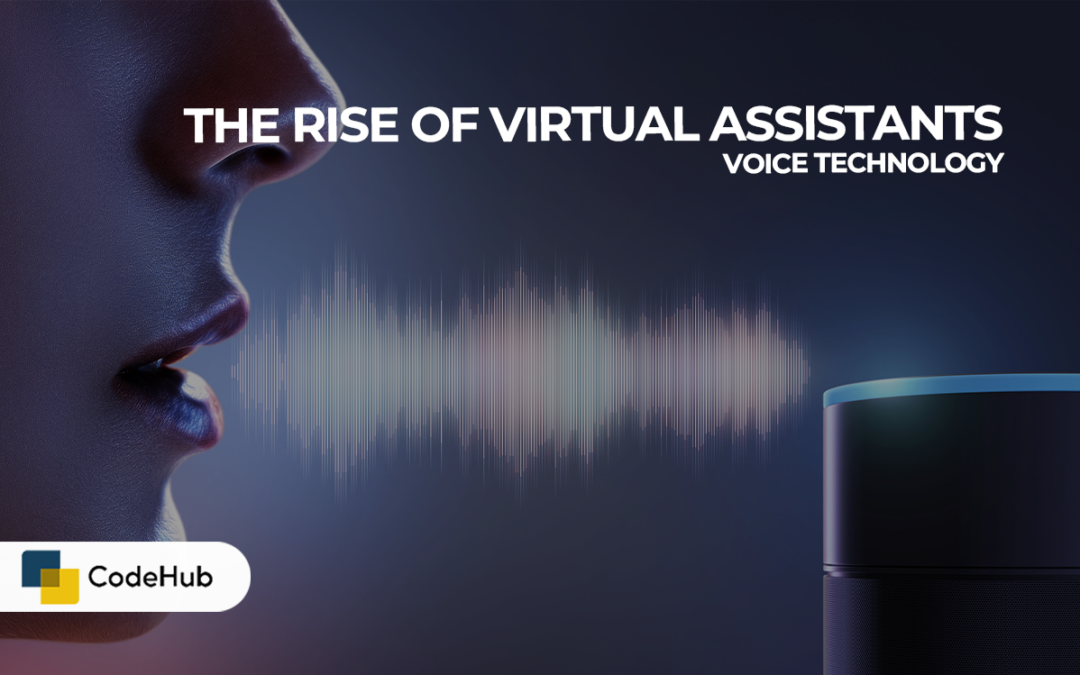Voice technology has rapidly evolved over the past decade, transforming from rudimentary speech recognition systems to sophisticated virtual assistants that are now an integral part of our daily lives. With the advent of artificial intelligence (AI) and machine learning, virtual assistants like Amazon Alexa, Google Assistant, Apple’s Siri, and Microsoft Cortana have become more capable and versatile, revolutionizing the way we interact with technology. This blog post delves into the rise of virtual assistants, their applications, and the future potential of voice technology.
The Evolution of Voice Technology
Voice recognition technology has its roots in the early 1950s, but it wasn’t until the late 2000s that significant advancements were made. The launch of Apple’s Siri in 2011 marked a pivotal moment, introducing the world to a personal assistant that could understand and respond to natural language commands. Following Siri’s success, other tech giants quickly developed their own virtual assistants.
- Amazon Alexa:
Launched in 2014, Alexa brought voice technology into homes through smart speakers. Its integration with smart home devices and wide range of skills made it immensely popular.
- Google Assistant:
Debuting in 2016, Google Assistant leveraged Google’s powerful search engine capabilities, providing users with accurate and context-aware responses.
- Microsoft Cortana:
Integrated into Windows 10 in 2015, Cortana aimed to enhance productivity through voice commands and integration with Microsoft Office tools.
Applications of Virtual Assistants
Virtual assistants are now embedded in a variety of devices and applications, offering numerous benefits and functionalities:
- Smart Home Integration:
Virtual assistants can control smart home devices such as lights, thermostats, security systems, and appliances. This integration allows users to manage their homes effortlessly through voice commands.
- Personal Productivity:
These assistants help manage daily tasks by setting reminders, scheduling appointments, sending messages, and providing weather and traffic updates. This enhances productivity and simplifies time management.
- Entertainment:
Virtual assistants can play music, podcasts, audiobooks, and even control TV streaming services. They can also answer trivia questions, tell jokes, and provide interactive games.
- Shopping:
With voice-enabled shopping, users can order products, track deliveries, and make grocery lists. Amazon Alexa, in particular, has streamlined online shopping through voice commands.
- Information Retrieval:
Virtual assistants provide quick access to information, answering questions about general knowledge, news, sports scores, and more, leveraging powerful search engines and databases.
The Impact on Industries
The rise of virtual assistants is not limited to personal use; they are making significant inroads into various industries:
- Healthcare:
Virtual assistants can help manage patient schedules, provide medication reminders, and even offer preliminary medical advice through symptom checking.
- Customer Service:
Many businesses use AI-driven chatbots and virtual assistants to handle customer inquiries, improving response times and customer satisfaction.
- Automotive:
Voice technology is being integrated into vehicles, allowing drivers to control navigation, entertainment, and communication systems without taking their hands off the wheel.
- Education:
Virtual assistants can assist with educational tasks, helping students with research, language learning, and study schedules.
Challenges and Considerations
Despite their many benefits, virtual assistants also present challenges and concerns:
- Privacy and Security: Voice-activated devices are always listening, raising concerns about data privacy and the potential for unauthorized access to personal information.
- Accuracy and Understanding: While virtual assistants have become more accurate, they still struggle with understanding accents, dialects, and complex commands.
- Dependence and Over-reliance: There is a risk of users becoming overly reliant on virtual assistants, potentially impacting their problem-solving skills and self-reliance.
The Future of Voice Technology
The future of voice technology holds immense potential, driven by continuous advancements in AI and machine learning:
Enhanced Natural Language Processing (NLP): Improvements in NLP will enable virtual assistants to understand and respond to more complex and nuanced commands, making interactions more natural and efficient.
Greater Personalization: Future virtual assistants will offer even more personalized experiences, learning from user behavior and preferences to provide tailored suggestions and actions.
Integration with Emerging Technologies: Voice technology will integrate with other emerging technologies such as augmented reality (AR) and virtual reality (VR), creating more immersive and interactive experiences.
Wider Adoption in Business: Businesses will increasingly adopt voice technology for tasks ranging from data entry to complex decision-making processes, enhancing efficiency and productivity.
Conclusion
Voice technology and virtual assistants have come a long way, becoming indispensable tools in both personal and professional settings. Their ability to streamline tasks, provide instant information, and control smart devices has revolutionized the way we interact with technology. As AI and machine learning continue to advance, the capabilities of virtual assistants will only grow, offering even more sophisticated and personalized experiences. The rise of virtual assistants marks a significant step towards a more connected, efficient, and voice-activated future.

